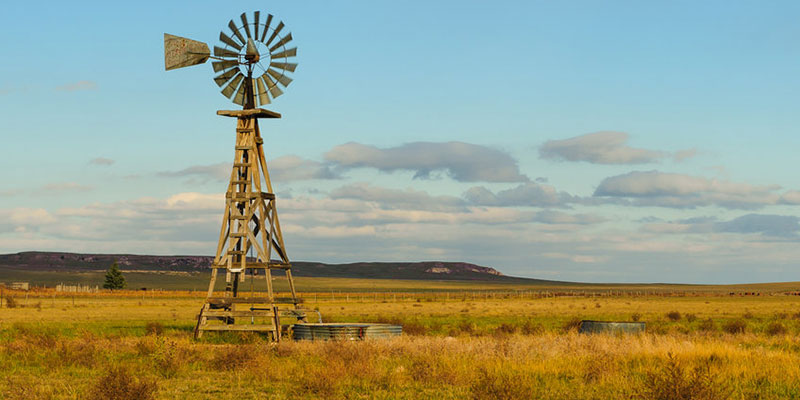Texas may be pumping groundwater from aquifers at an unsustainable rate, but recent studies show some reasons for optimism.
Desalination and wastewater treatment for reuse makes managing essential resources possible
Texas is pumping groundwater at unsustainable rates, which means more wells, springs, and surface water bodies may start to run dry. The state is already losing groundwater at almost double the sustainable rate, and researchers warn that current management agency plans will likely increase the rate at which Texas’ groundwater resources rush toward depletion. Are there ways for Texas communities to combat groundwater depletion?
In the report, “Five Gallons in a Ten Gallon Hat: Groundwater Sustainability in Texas,” Dr. Robert E. Mace of the Meadows Center for Water and the Environment at Texas State University draws attention to unrealistic planning for many aquifers, while offering an optimistic view of opportunities for groundwater sustainability overall.
Of the 21 aquifers he studied, 13 are currently being pumped at or below the maximum sustainable production levels, however, groundwater conservation districts are projecting to use twice as much groundwater in 2070 than can be sustainably used, reducing the number of sustainably pumped aquifers from 13 to five. In other words, Texas’ groundwater may be OK for now, but changes must be made in order to support growth over the next 50 years.
The outlook for the Ogallala Aquifer is particularly extreme. It’s the main water source for “the nation’s breadbasket” in the High Plains and Panhandle regions, yet water for agricultural use is being pumped at 6.5 times faster than the sustainable rate, which if not drastically curbed, will ultimately lead to the aquifer’s depletion.
Still, Dr. Mace said Texas’ other aquifers can still achieve groundwater sustainability overall because current production for all aquifers combined (not counting the Ogallala) has reached only 80% of the maximum sustainable rate. “There’s still time to manage groundwater so that future Texans can count on it,” he said.
Advancing Groundwater Sustainability in Texas
An Environmental Defense Fund (EDF) report, “Advancing Groundwater Sustainability in Texas: A Guide to Existing Authorities and Management Tools for Groundwater Conservation Districts and Communities,” echoes Dr. Mace’s concerns but focuses on raising awareness among rural groundwater conservation districts about the regulatory tools available to them and their wide authority to use them.
Lead author Vanessa Puig-Williams, director of EDF’s Texas Water Program, explained:
Local groundwater districts already have the power to protect their communities’ water supplies. They simply need better data to inform decisions, as well as the commitment to manage these essential resources in a more sustainable way.
Using available data to creating management zones and drought triggers as well as using regulatory tools to incentivize landowners are some of the tactics that local government can use to reduce and preserve groundwater.
Solutions to Aquifer Depletion
When confronting the invisible crisis of aquifer depletion in Texas or anywhere in the world, it no longer makes sense to use water only once. Water reuse is a valuable way to preserve aquifers both by decreasing demand on them and through managed aquifer recharge, which can use treated wastewater to restore groundwater.
Although some psychological barriers to water reuse remain, Texas has led the nation in direct potable reuse (DPR), an often controversial form of water reuse. Adoption of DPR has been successful in Big Springs, Wichita Falls, Brownwood, and El Paso.
Fluence’s packaged Aspiral™ wastewater treatment plants can transform even municipal wastewater into a safe stream of effluent for nonpotable applications, reducing reliance on well water for irrigation and other uses.
The membrane aerated biofilm reactor (MABR) technology at the core of Aspiral™ plants has proved itself against strict water reuse standards, including California’s Title 22 and China’s Class 1A.
Another challenge facing aquifers is the quality of water they store. In Texas, aquifers contain an estimated 880 trillion gallons of brackish water. Although unusable if untreated, brackish water can be desalinated to make it usable for irrigation and drinking water.
Because of technological advances and the fact that brackish water is less expensive to desalinate than seawater, reverse-osmosis desalination is now a viable option for many inland communities. Fluence’s NIROBOX™ modular plants can bring updated-reverse osmosis technology anywhere there’s brackish water.
Desalination with NIROBOX and wastewater treatement for reuse with AspiralTM are two ways to attack groundwater depletion in Texas. If you prefer to pay only for the clean water, while Fluence takes care of the build and maintenance of the plant, check out our Water Management Services, or contact Fluence to explore your community’s options for preserving freshwater aquifers for future generations.

